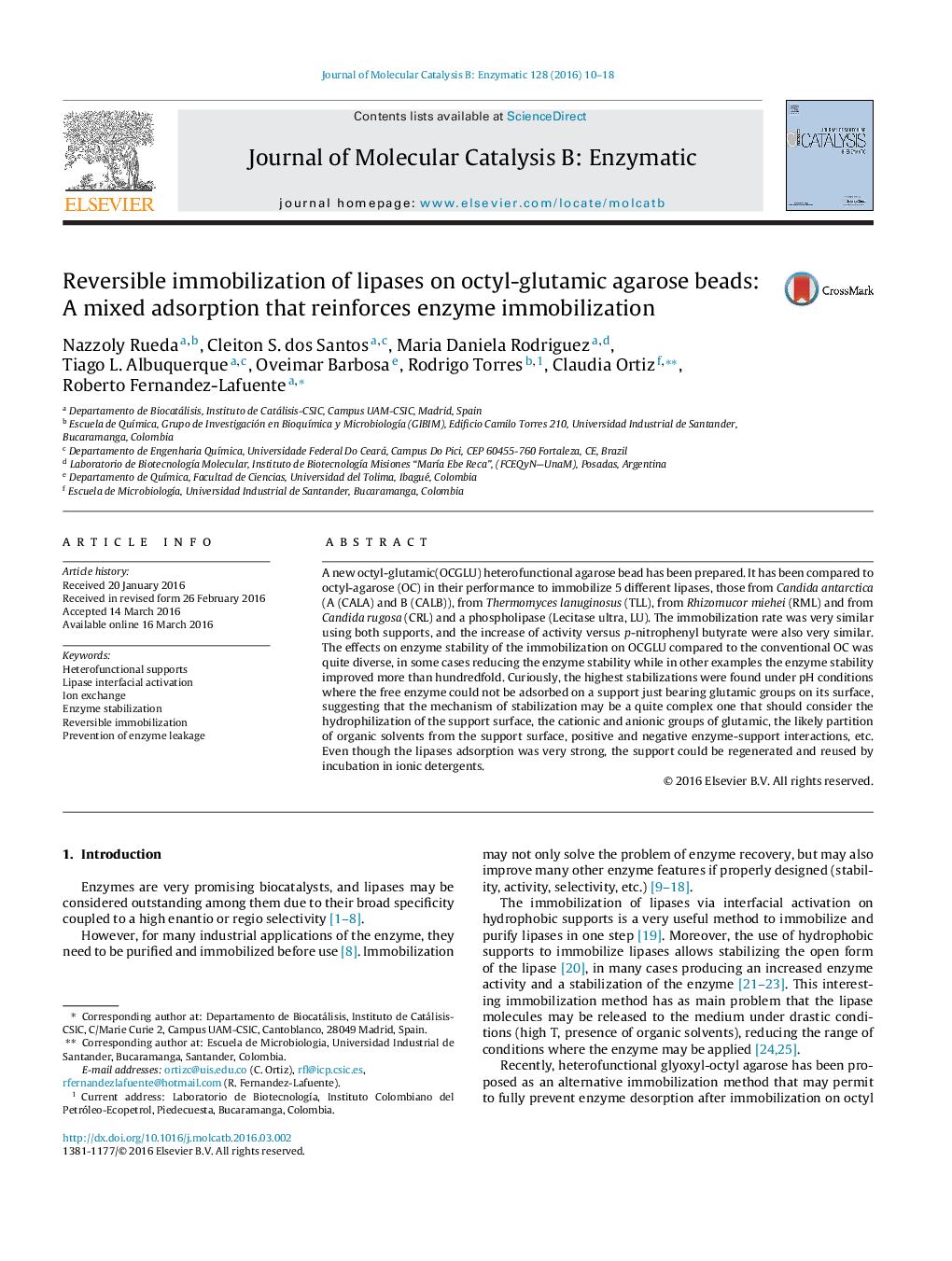| کد مقاله | کد نشریه | سال انتشار | مقاله انگلیسی | نسخه تمام متن |
|---|---|---|---|---|
| 69316 | 48750 | 2016 | 9 صفحه PDF | دانلود رایگان |

• OCGLU and OC immobilized lipases at the same rate and with the same final activity.
• OCGLU immobilized enzymes remained attached to the support under conditions where OC immobilized enzymes were fully desorbed.
• OCGLU could be used in repeated cycles of adsorption/desorption.
• The stability of the new preparations in some cases overpass that of the glyoxyl-octyl preparations.
A new octyl-glutamic(OCGLU) heterofunctional agarose bead has been prepared. It has been compared to octyl-agarose (OC) in their performance to immobilize 5 different lipases, those from Candida antarctica (A (CALA) and B (CALB)), from Thermomyces lanuginosus (TLL), from Rhizomucor miehei (RML) and from Candida rugosa (CRL) and a phospholipase (Lecitase ultra, LU). The immobilization rate was very similar using both supports, and the increase of activity versus p-nitrophenyl butyrate were also very similar. The effects on enzyme stability of the immobilization on OCGLU compared to the conventional OC was quite diverse, in some cases reducing the enzyme stability while in other examples the enzyme stability improved more than hundredfold. Curiously, the highest stabilizations were found under pH conditions where the free enzyme could not be adsorbed on a support just bearing glutamic groups on its surface, suggesting that the mechanism of stabilization may be a quite complex one that should consider the hydrophilization of the support surface, the cationic and anionic groups of glutamic, the likely partition of organic solvents from the support surface, positive and negative enzyme-support interactions, etc. Even though the lipases adsorption was very strong, the support could be regenerated and reused by incubation in ionic detergents.
Figure optionsDownload as PowerPoint slide
Journal: Journal of Molecular Catalysis B: Enzymatic - Volume 128, June 2016, Pages 10–18